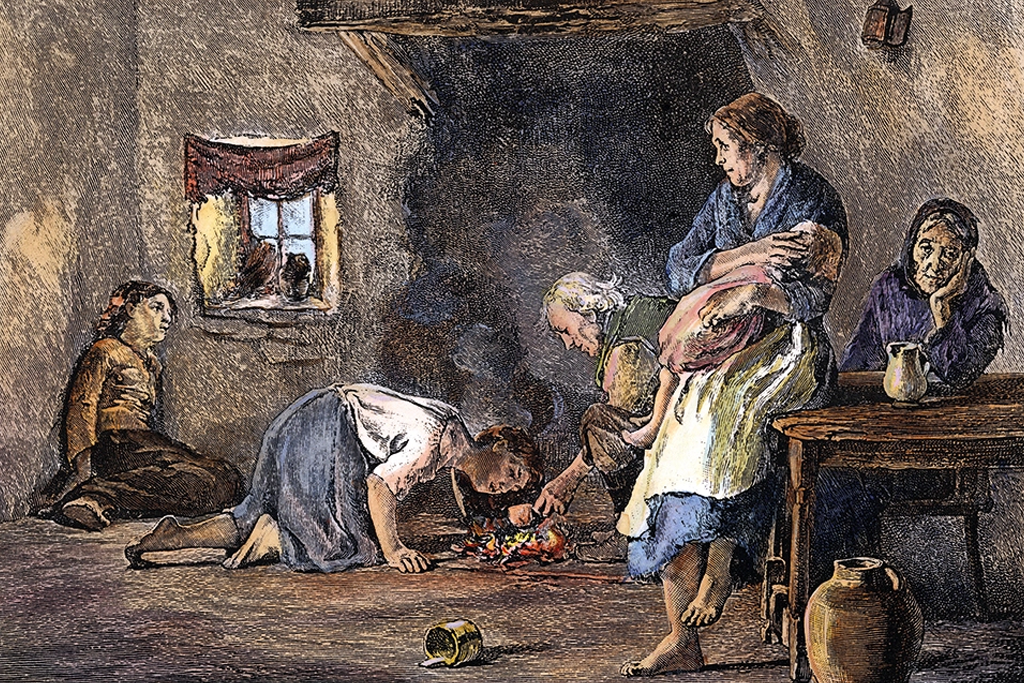It was the best of times, it was the worst of times: not France in 1789, convulsed by revolution, but Britain in 1845, when the period Dickens referred to as “the moving age” was in danger of spinning out of control. It was the year when the SS Great Britain, designed by Isambard Kingdom Brunel, left Liverpool docks on the first transatlantic crossing by an iron-built steamship; the Hungerford suspension bridge (another Brunel design) opened, and a Birmingham manufacturer obtained a patent ‘for Improvements in Springs to be applied to Girths, Belts and Bandages, and Improvements in the Manufacture of Elastic Bands’: the birth of the modern rubber band.
It was also the year when Sir John Franklin set out on the ill-fated expedition that would end in the icy wastes of the Canadian Arctic; the Yarmouth suspension bridge collapsed, killing dozens of spectators who had gathered to watch a clown being drawn down the river in a washing tub pulled by four geese; and a potato blight in Ireland saw the start of years of famine that would leave approximately 2 million starving or displaced.
Most commentators see 1848 as the pivotal year of that decade, with revolutions breaking out across Europe and the constant simmering threat of Chartist agitators at home. But according to Michael Wheeler we should pay far more attention to 1845, later characterized by Dickens’s friend John Forster as a “prodigious year of excitement and disaster.” There were numerous public scandals, including the revelation that inmates in one workhouse were so badly fed they had been gnawing on the rotten bones they were supposed to be crushing for fertilizer. There were also personal crises, such as the start of the relationship between the poets Robert Browning and Elizabeth Barrett, conducted mostly by correspondence, as Barrett sent out dozens of love letters from her father’s house in Wimpole Street as a way of preparing the ground for her own departure the following year: literary exercises in elopement.
As far as Wheeler is concerned, we should see such correspondence as remarkable but not particularly unusual. The introduction of the universal penny post in 1840 had led to a huge increase in the number of letters being sent and received, with deliveries being made promptly several times a day. (Anyone who is still receiving Christmas cards posted in the middle of December, as I did last week, will read this historical detail with a weary sigh.) In October 1845, Punch magazine reported rumors that Post Office employees were “daily in danger of being suffocated, swamped and smothered by the enormous quantity of letters pouring in upon them at every chink, hole, corner and cranny of the establishment.” Taking his cue from this flood of paper, Wheeler sketches out some of the main events of the year as filtered through the letters of those involved. The result is less a group portrait than a well-researched historical jigsaw puzzle.
We discover the swirl of political gossip that surrounded the revelation that the private letters of the exiled Italian nationalist Giuseppe Mazzini had been intercepted by British government agents in London. We follow the young John Ruskin’s progress through Europe, mapped out in a series of letters to his smotheringly supportive parents waiting at home. We look over the shoulder of John Henry Newman as he picks up his pen and carefully sets out his reasons for breaking with the Church of England. Dickens, William Gladstone, Thomas Carlyle, Sir Robert Peel, Daniel O’Connell: all have stories to tell through the letters they write, or those they write about.
Wheeler is a fine cultural historian, and anyone who picks up this book will learn a great deal about the figures he has chosen. If they end up learning rather less about the state of the nation as a whole, that is because these “persons of note” (Peel’s phrase) are hardly representative: they include only two women, for example, and only then in relation to their husbands or husbands-to-be.
Wheeler is at his best when offering little snapshots of the year: Gladstone winning 2s. 2d. at cards after a long day in parliament, 8d. of it from Prince Albert; or Jane Welsh Carlyle writing bitchily of her husband’s latest admirer that she is “immensely large” and might benefit from “a little whipping.” But anyone who isn’t already familiar with the period might struggle to fit these fragments together into a coherent narrative. By the end of the book, the jigsaw remains unfinished.
It certainly doesn’t challenge Alethea Hayter’s classic work A Sultry Month: Scenes of London Literary Life in 1846, which examines the fascinatingly messy lives of many of the same people the following year. Wheeler’s study is careful and consistently interesting, but it is Hayter who really brings “the moving age” to life.
This article was originally published in The Spectator’s UK magazine. Subscribe to the World edition here.

























